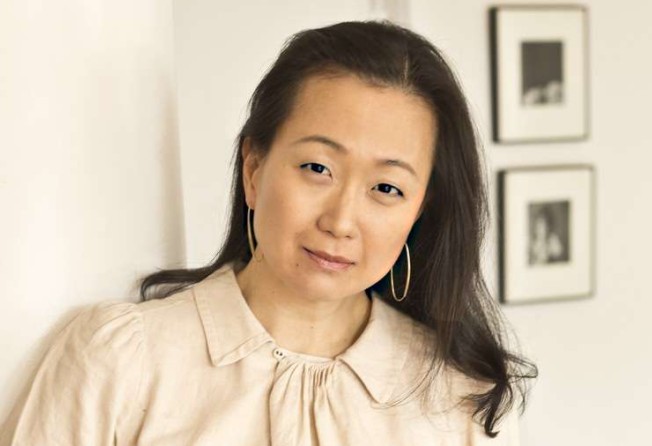
by Min Jin Lee
Grand Central Publishing
Lee’s second novel, almost 30 years in the making, is a brilliant, subtle account of a Korean family across four generations and eight decades, and the struggles to find an identity as tradition crumbles in the face of modernity


“History has failed us, but no matter.” So begins Korean-American author Min Jin Lee’s gripping new novel about a chapter largely ignored in English literature: the Koreans in Japan.
It is only as the reader approaches the end of the novel that the momentous historical weight and narrative ambition of this enigmatic opening hit home. Within a few scant sentences, Lee transports us directly into the joys and vicissitudes of an ageing fisherman and his wife who, in 1910, are living in the Korean fishing village of Yeongdo with their only son, a hardworking, club-footed, cleft-lipped 27-year-old named Hoonie.
Not that the page-turning quality of Lee’s unadorned prose should come as a surprise. She’s renowned for her award-winning short stories, and her debut novel, Free Food for Millionaires, was declared one of the top 10 novels of 2007 by The Times of London and was a New York Times Editor’s Choice.

It was while living in Tokyo from 2007 to 2011, when she met and interviewed dozens of Koreans living in Japan, that she completed the final draft.
Taking its cues from the 19th-century social novel, this mammoth three-part saga of love, loss, toil and unspeakable hardship rarely misses a historical or emotional beat as it tells the story of an extended Korean family across four generations and eight decades. Life is becoming increasingly desperate on the Korean peninsula a decade into the 20th century, when Lee takes up her tale, which, narrated in the third person, unfurls in the intimate, omniscient tone of a fable. Japan annexed Korea in 1910, and Hoonie’s thrifty parents decide to make extra money by taking lodgers into the wooden house they have rented for three decades.

Then, in the difficult winter of 1932, after Japan’s invasion of Manchuria, when “this thing called a Depression was found everywhere in the world”, Yangjin and Sunja take in a new lodger at their overcrowded inn. Baek Isak, a young, handsome Protestant pastor from Pyongyang, plans to join his brother in Osaka, but falls ill with tuberculosis, and the two women nurse him back to health.
Sunja, meanwhile, now 16, has fallen in love with a wealthy fish broker, Koh Hansu. When she falls pregnant, he reveals he already has a wife and three daughters in Tokyo. Sunja is saved from a life of shame by an offer of marriage from Isak. After a hasty wedding and Christian baptism, she travels with the pastor to Osaka to stay with his brother, Yoseb, and his wife.
As this epic novel hurtles onward into Japan and the Korean ghetto of Osaka’s Ikaino district, the fable-like tone of its earlier chapters morphs into a harder-edged narrative. Sunja’s childless in-laws welcome the birth of her son, Noa, as if he were their own, and Yoseb takes pride in supporting his family, through his job as a foreman at a biscuit factory. But the suffering that has characterised Sunja’s life in Korea is, in many ways, magnified by the severe discrimination she, Isak and Noa now face in Japan.

It is only after tragedy again strikes the family, and Hansu mysteriously reappears to usher them to the countryside on the eve of the second world war bombing of Japan, that readers will realise how much of what unfolds in Pachinko revolves around not only a national history, but also a private one. The ramifications of Sunja’s youthful love affair ripple across the generations.
This is a novel of almost 500 pages, with gears that shift repeatedly, subtly, rather like the pins on the machines that Mozasu learns to direct in the pachinko parlours that he comes to manage, then own as the 20th century progresses. And as the family’s story plays on into the late 1980s, with Sunja’s grandson, Solomon, the implications of the novel’s title, both real and metaphorical, become evident. Chance, fear and loneliness are present at every turn in this narrative, its immigrant characters gambling for their very lives in a country where the outcome, like those machines in Mozasu’s parlour, has already been carefully calibrated.
Pachinko is about paying dues to a forgotten history; to the complex and fraught Japan-Korea relationship that endured well into the 90s and lingers to this day. But it doesn’t wear its heart – or historical truths – on its sleeve.
What drives this novel is the magisterial force of Lee’s characterisation; her ability to ground the narrative deeply and intimately in the details of daily life. Also threaded through it are questions of home, identity, nationhood and tradition – including the belief of its female protagonists that “a woman’s lot is to suffer”.
Lee is at pains not to demonise Japan or her Japanese characters, who are as complex and as humanly portrayed as her Korean ones. Indeed, at times, the novel can read like a cipher for the titanic struggle between tradition and modernity, as the disparate characters of these two great Asian cultures strive to build their lives in the shifting sands of the 20th century.
As heartbreaking as it is compelling, Pachinko is a timely meditation on all that matters to humanity in an age of mass migration and uncertainty.